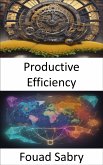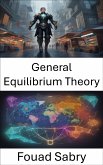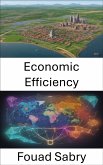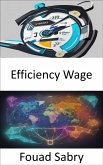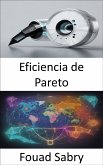What is Pareto Efficiency
Pareto efficiency or Pareto optimality is a situation where no action or allocation is available that makes one individual better off without making another worse off. The concept is named after Vilfredo Pareto (1848-1923), Italian civil engineer and economist, who used the concept in his studies of economic efficiency and income distribution. The following three concepts are closely related:Given an initial situation, a Pareto improvement is a new situation where some agents will gain, and no agents will lose.A situation is called Pareto-dominated if there exists a possible Pareto improvement.A situation is called Pareto-optimal or Pareto-efficient if no change could lead to improved satisfaction for some agent without some other agent losing or, equivalently, if there is no scope for further Pareto improvement.
How you will benefit
(I) Insights, and validations about the following topics:
Chapter 1: Pareto efficiency
Chapter 2: Economic efficiency
Chapter 3: Welfare economics
Chapter 4: Allocative efficiency
Chapter 5: Social planner
Chapter 6: Liberal paradox
Chapter 7: Fundamental theorems of welfare economics
Chapter 8: Competitive equilibrium
Chapter 9: Efficient cake-cutting
Chapter 10: Efficient envy-free division
Chapter 11: Weller's theorem
Chapter 12: Utilitarian cake-cutting
Chapter 13: Envy-free item allocation
Chapter 14: Approximate Competitive Equilibrium from Equal Incomes
Chapter 15: Fair random assignment
Chapter 16: Random priority item allocation
Chapter 17: Egalitarian equivalence
Chapter 18: Efficient approximately fair item allocation
Chapter 19: Fractional Pareto efficiency
Chapter 20: Egalitarian rule
Chapter 21: Ordinal Pareto efficiency
(II) Answering the public top questions about pareto efficiency.
(III) Real world examples for the usage of pareto efficiency in many fields.
Who this book is for
Professionals, undergraduate and graduate students, enthusiasts, hobbyists, and those who want to go beyond basic knowledge or information for any kind of Pareto Efficiency.
Pareto efficiency or Pareto optimality is a situation where no action or allocation is available that makes one individual better off without making another worse off. The concept is named after Vilfredo Pareto (1848-1923), Italian civil engineer and economist, who used the concept in his studies of economic efficiency and income distribution. The following three concepts are closely related:Given an initial situation, a Pareto improvement is a new situation where some agents will gain, and no agents will lose.A situation is called Pareto-dominated if there exists a possible Pareto improvement.A situation is called Pareto-optimal or Pareto-efficient if no change could lead to improved satisfaction for some agent without some other agent losing or, equivalently, if there is no scope for further Pareto improvement.
How you will benefit
(I) Insights, and validations about the following topics:
Chapter 1: Pareto efficiency
Chapter 2: Economic efficiency
Chapter 3: Welfare economics
Chapter 4: Allocative efficiency
Chapter 5: Social planner
Chapter 6: Liberal paradox
Chapter 7: Fundamental theorems of welfare economics
Chapter 8: Competitive equilibrium
Chapter 9: Efficient cake-cutting
Chapter 10: Efficient envy-free division
Chapter 11: Weller's theorem
Chapter 12: Utilitarian cake-cutting
Chapter 13: Envy-free item allocation
Chapter 14: Approximate Competitive Equilibrium from Equal Incomes
Chapter 15: Fair random assignment
Chapter 16: Random priority item allocation
Chapter 17: Egalitarian equivalence
Chapter 18: Efficient approximately fair item allocation
Chapter 19: Fractional Pareto efficiency
Chapter 20: Egalitarian rule
Chapter 21: Ordinal Pareto efficiency
(II) Answering the public top questions about pareto efficiency.
(III) Real world examples for the usage of pareto efficiency in many fields.
Who this book is for
Professionals, undergraduate and graduate students, enthusiasts, hobbyists, and those who want to go beyond basic knowledge or information for any kind of Pareto Efficiency.
Dieser Download kann aus rechtlichen Gründen nur mit Rechnungsadresse in A, B, BG, CY, CZ, D, DK, EW, E, FIN, F, GR, H, IRL, I, LT, L, LR, M, NL, PL, P, R, S, SLO, SK ausgeliefert werden.



